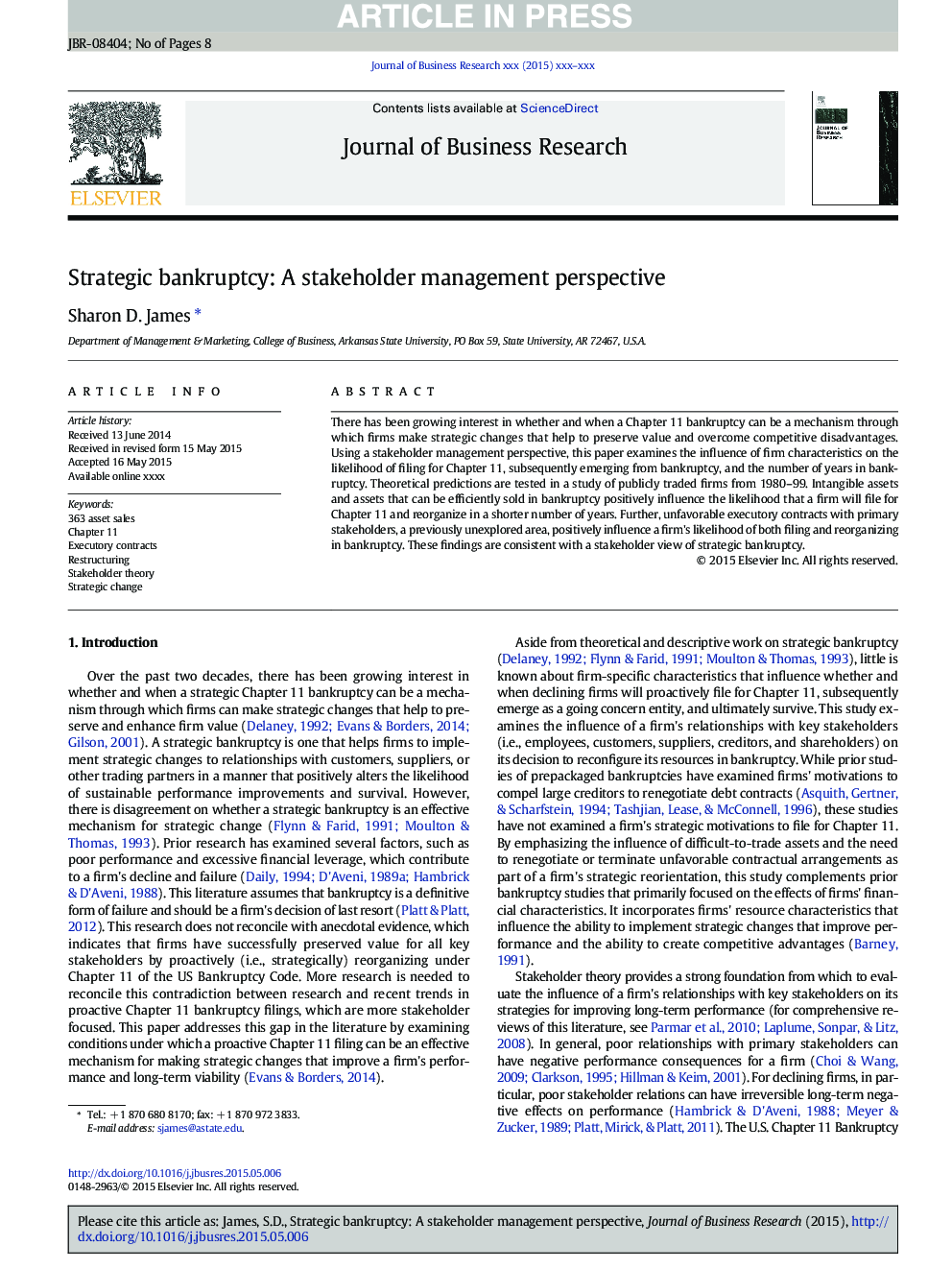| Article ID | Journal | Published Year | Pages | File Type |
|---|---|---|---|---|
| 10492827 | Journal of Business Research | 2016 | 8 Pages |
Abstract
There has been growing interest in whether and when a Chapter 11 bankruptcy can be a mechanism through which firms make strategic changes that help to preserve value and overcome competitive disadvantages. Using a stakeholder management perspective, this paper examines the influence of firm characteristics on the likelihood of filing for Chapter 11, subsequently emerging from bankruptcy, and the number of years in bankruptcy. Theoretical predictions are tested in a study of publicly traded firms from 1980-99. Intangible assets and assets that can be efficiently sold in bankruptcy positively influence the likelihood that a firm will file for Chapter 11 and reorganize in a shorter number of years. Further, unfavorable executory contracts with primary stakeholders, a previously unexplored area, positively influence a firm's likelihood of both filing and reorganizing in bankruptcy. These findings are consistent with a stakeholder view of strategic bankruptcy.
Related Topics
Social Sciences and Humanities
Business, Management and Accounting
Business and International Management
Authors
Sharon D. James,
